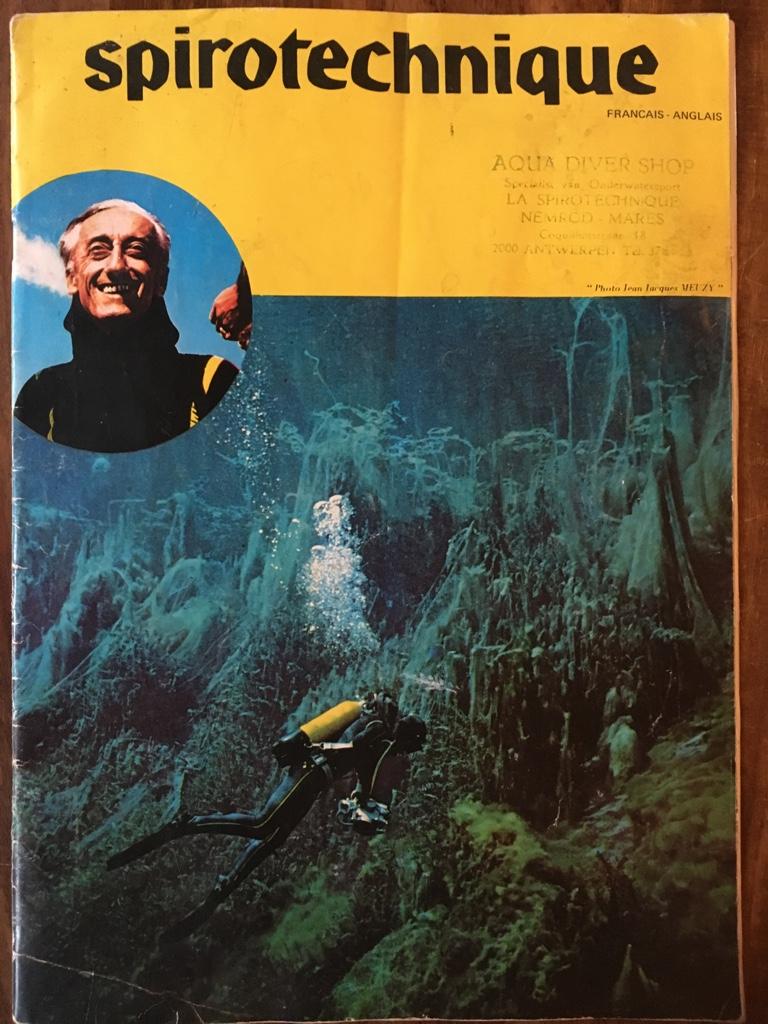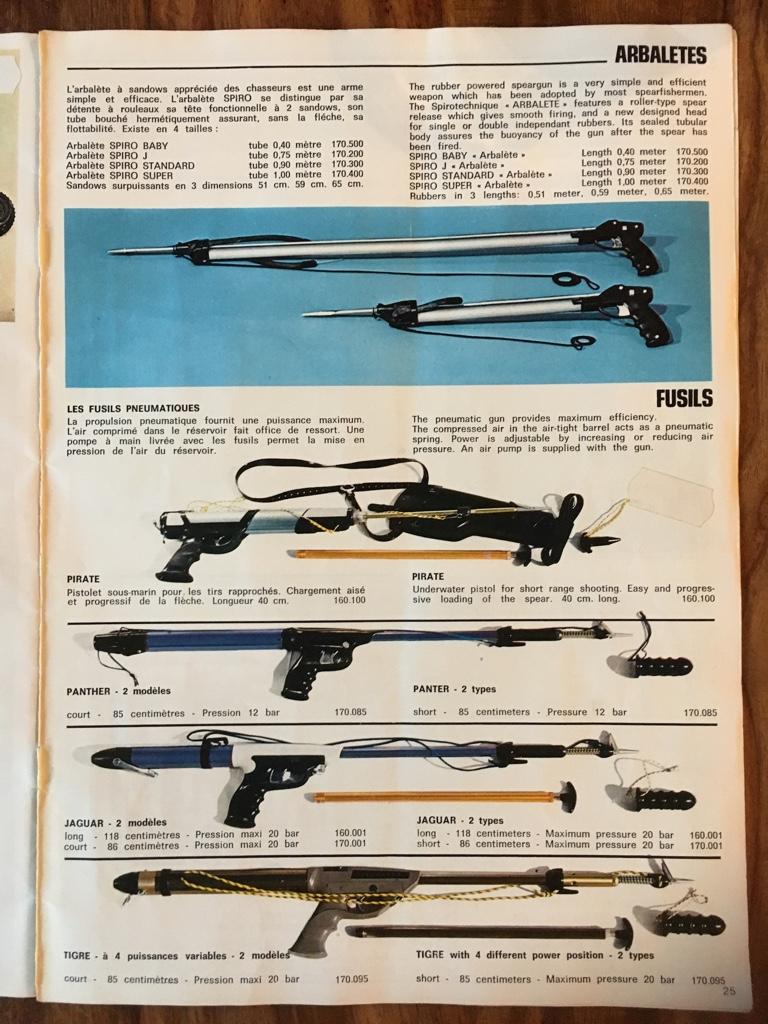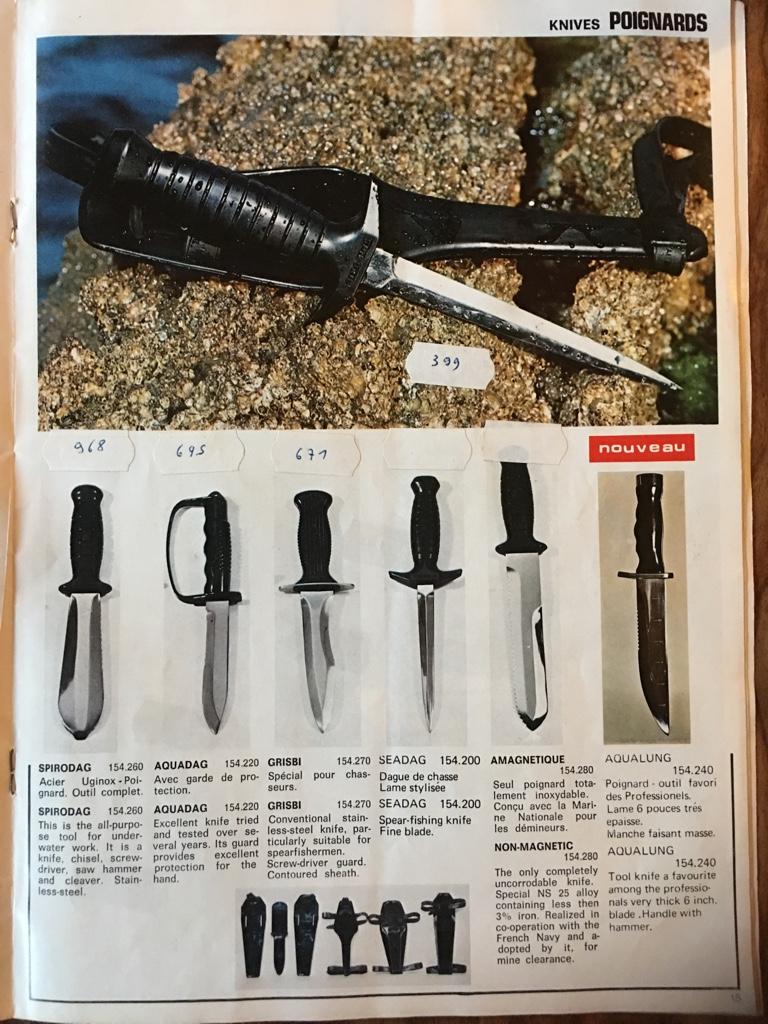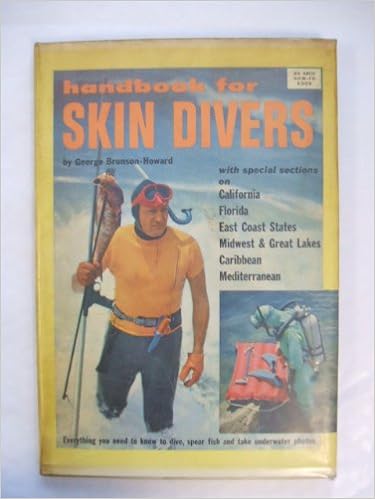It's been a while since I completed my thread tracing the development of the monofin from the 1940s to the early 1970s and I've been pondering under the current lockdown which topic to broach next in breathhold diving equipment history. Having reviewed the literature accessible to me online and in print, I have plumped for the combined mask and snorkel popular with certain spearfishermen from the late 1940s to the end of the 1950s.
A typical modern reaction might be scepticism, or even disbelief, that mid-twentieth-century spearfishers would consider using such devices instead of a separate mask and snorkel. Even back then there were siren voices decrying their use. Journalist and British Sub-Aqua Club co-founder Peter Small, for example, wrote the following in his 1957 book Your Guide to Underwater Adventure: "You may see masks with all sorts of attachments, gadgets and novelties. Many of them, to my mind, are of dubious value, and they will send the price up. In particular, many have the breathing tube built in as an integral part of the mask. I have never seen the advantage of this, and this is an opinion shared by most experienced underwater swimmers I know."
Others chose to disagree. By way of example, Simon Codrington's 1954 book Guide to Underwater Hunting: "(One) type of mask normally covers eyes, nose and mouth, and has a breathing tube built into the side (in some cases both sides of the head), while in other types only one tube is fitted, in the centre. The advantage of this kind of mask is mainly from the comfort point of view. It fits snugly to one’s face, there is no mouthpiece to bite on, and one can breathe through either nose or mouth."
And Cornel Lumière's 1956 book Beneath the seven seas: "The latest kind of mask is the full-face type, covering eyes, nose and mouth, with a snorkel built into the mask. This breathing device consists of a small, generally plastic, tube leading from the mask to above the head. When the face is in the water, looking down from the surface, one may still comfortably breathe through the tube. A valve attachment closes the tube the moment one dives under and opens immediately upon emerging. This mask is ideal for the beginner and much liked by many experts. First of all, it gives the largest possible field of vision. Secondly, as it covers also the nose and mouth, it is a must for those who have sinus trouble. Thirdly, and this is important, it enables the wearer to keep his face in the water as long as he likes. One breathes through the snorkel and never has to look up or take one’s face out of the water for breathing. This makes it possible to keep both eyes on the target without interruption. It tends to give a feeling of security to know at all times what is going on below.... Built-in snorkel masks are the best."
A picture is said to be worth a thousand words:

Amateur lobsterman holds up lobster he caught with net, Atlantic Ocean, near Maine

Spear Fishing Snorkelers in the Water

Illustration from Lumière's Beneath the seven seas.
So much for my first post on this new thread, whose purpose, I must emphasise, is to review 1940s-1950s snorkel-masks as interesting period artefacts, museum exhibits from a very different era of underwater exploration. I'm certainly not advocating their use in this new millennium where health and safety considerations are rightly paramount. And to stress this point, I will be focusing next on the type of snorkel-mask impossible to find outside museums or private collections: eleven models fitted with flexible hoses. I hope what I post will be of interest to others on this forum and I encourage any constructive comments, personal experiences and useful insights. In the meantime, stay tuned and stay safe!
A typical modern reaction might be scepticism, or even disbelief, that mid-twentieth-century spearfishers would consider using such devices instead of a separate mask and snorkel. Even back then there were siren voices decrying their use. Journalist and British Sub-Aqua Club co-founder Peter Small, for example, wrote the following in his 1957 book Your Guide to Underwater Adventure: "You may see masks with all sorts of attachments, gadgets and novelties. Many of them, to my mind, are of dubious value, and they will send the price up. In particular, many have the breathing tube built in as an integral part of the mask. I have never seen the advantage of this, and this is an opinion shared by most experienced underwater swimmers I know."
Others chose to disagree. By way of example, Simon Codrington's 1954 book Guide to Underwater Hunting: "(One) type of mask normally covers eyes, nose and mouth, and has a breathing tube built into the side (in some cases both sides of the head), while in other types only one tube is fitted, in the centre. The advantage of this kind of mask is mainly from the comfort point of view. It fits snugly to one’s face, there is no mouthpiece to bite on, and one can breathe through either nose or mouth."
And Cornel Lumière's 1956 book Beneath the seven seas: "The latest kind of mask is the full-face type, covering eyes, nose and mouth, with a snorkel built into the mask. This breathing device consists of a small, generally plastic, tube leading from the mask to above the head. When the face is in the water, looking down from the surface, one may still comfortably breathe through the tube. A valve attachment closes the tube the moment one dives under and opens immediately upon emerging. This mask is ideal for the beginner and much liked by many experts. First of all, it gives the largest possible field of vision. Secondly, as it covers also the nose and mouth, it is a must for those who have sinus trouble. Thirdly, and this is important, it enables the wearer to keep his face in the water as long as he likes. One breathes through the snorkel and never has to look up or take one’s face out of the water for breathing. This makes it possible to keep both eyes on the target without interruption. It tends to give a feeling of security to know at all times what is going on below.... Built-in snorkel masks are the best."
A picture is said to be worth a thousand words:
Amateur lobsterman holds up lobster he caught with net, Atlantic Ocean, near Maine
Spear Fishing Snorkelers in the Water
Illustration from Lumière's Beneath the seven seas.
So much for my first post on this new thread, whose purpose, I must emphasise, is to review 1940s-1950s snorkel-masks as interesting period artefacts, museum exhibits from a very different era of underwater exploration. I'm certainly not advocating their use in this new millennium where health and safety considerations are rightly paramount. And to stress this point, I will be focusing next on the type of snorkel-mask impossible to find outside museums or private collections: eleven models fitted with flexible hoses. I hope what I post will be of interest to others on this forum and I encourage any constructive comments, personal experiences and useful insights. In the meantime, stay tuned and stay safe!
Last edited:









